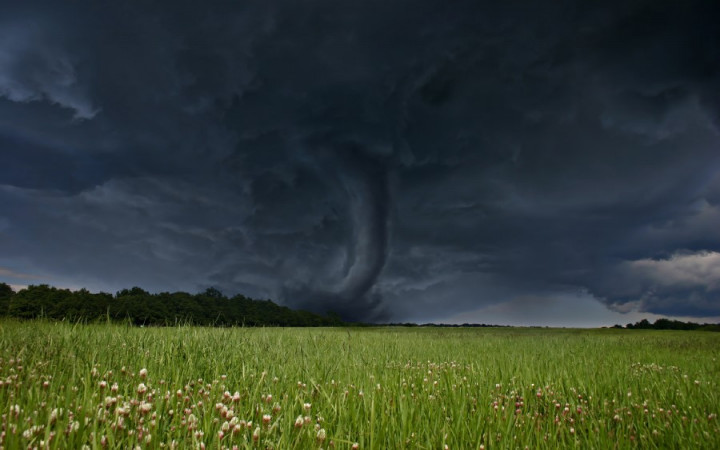It's a cloudy day on the Kansas plains. You and your dad keep a wary eye on the skies as you plow the fields. You've seen clouds like these before, and you know that they can be trouble.
As the afternoon fades away, you begin to see the clouds form a wall. As the sky turns a menacing color, you head for safety, afraid that a twister may soon be headed your way. What are you afraid of? A tornado, of course!
With wind speeds that can exceed 300 miles per hour, tornadoes are one of the most devastating and destructive forces on Earth. Consisting of a rotating column of air that extends from a thunderstorm to the ground, tornadoes can cause massive damage to land, buildings, and people.
Although tornadoes have hit every continent except Antarctica, they're most common in North America, particularly in the section of the Midwest United States known as “Tornado Alley." Experts estimate as many as 1,000 tornadoes are reported in the U.S. in an average year.
For years, tornadoes were a mystery to scientists. Thanks to modern technology, however, researchers are beginning to unravel the secrets behind the environmental forces that spawn tornadoes.
Tornadoes usually form out of massive thunderstorms. When moist, warm air from the Gulf of Mexico meets dry, cold air from Canada, an unstable collision in the atmosphere occurs. The warm air rises quickly and the cold air falls, creating a supercell, which is a type of large thunderstorm with swirling updrafts of air.
Winds blowing within the supercell will often move at different speeds, creating a phenomenon scientists call wind shear. Wind shear can cause a spinning effect within the supercell. This area of rotating winds within a supercell, known as a mesocyclone, can extend from one to more than five miles wide.
If the supercell's updraft turns the mesocyclone from a horizontal to a vertical position, a funnel cloud will form. If the updraft strengthens, it can stretch the funnel cloud, causing it to tighten its spin and speed up. If rain and hail from the thunderstorm cause the funnel cloud to lengthen to the point where it touches the ground, it becomes a tornado.
When we think of tornadoes, we often imagine a traditional funnel shape. However, they can also be very slender and look like a rope. Some tornadoes even have multiple vortices, which are multiple small tornadoes swirling around a common center point.
Tornadoes may sometimes look like a large moving column of dark smoke. Other tornadoes are nearly invisible and can only be seen when dust or debris moves at ground level as the tornado passes. Some tornadoes even form over water. Scientists call these tornadoes waterspouts.




